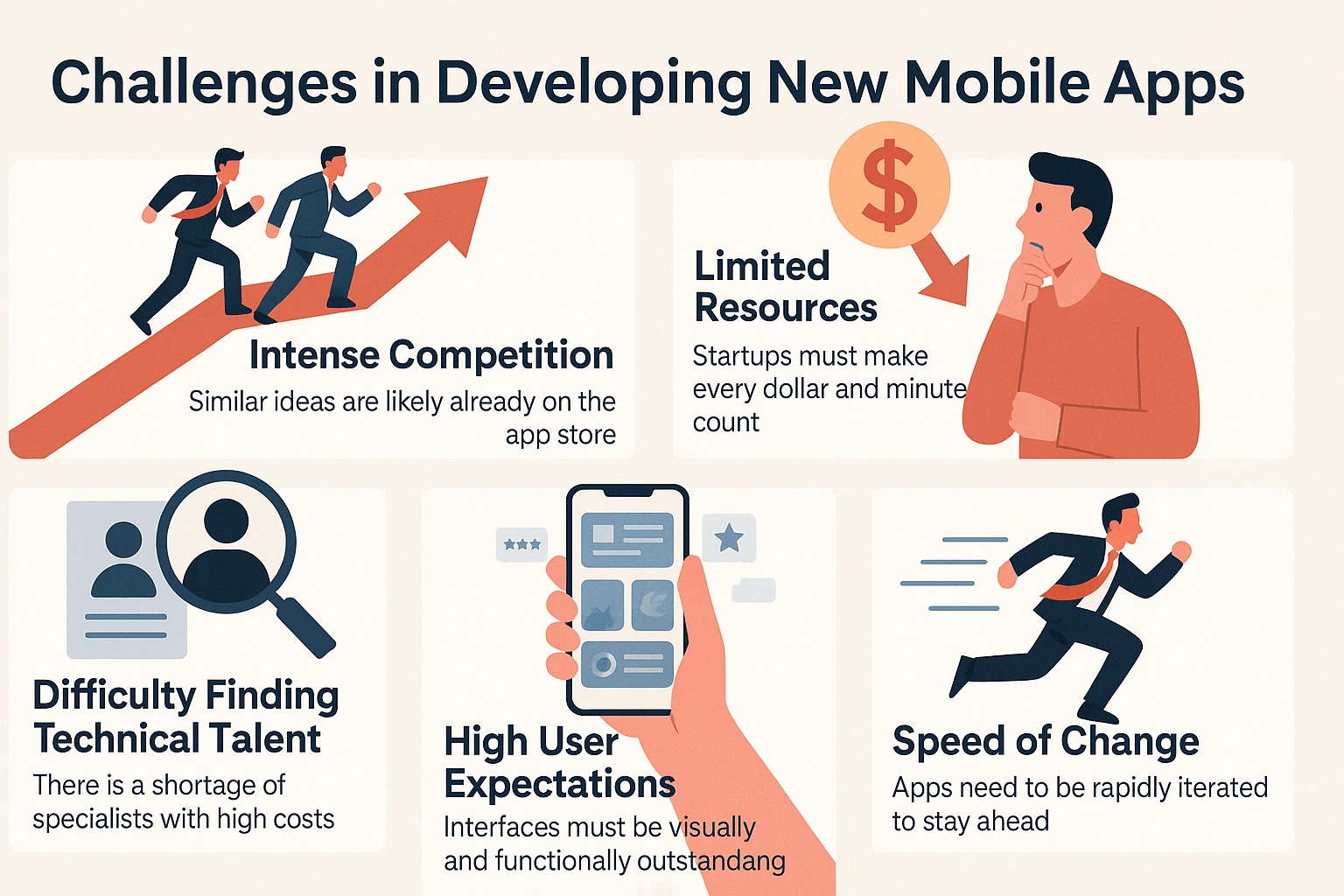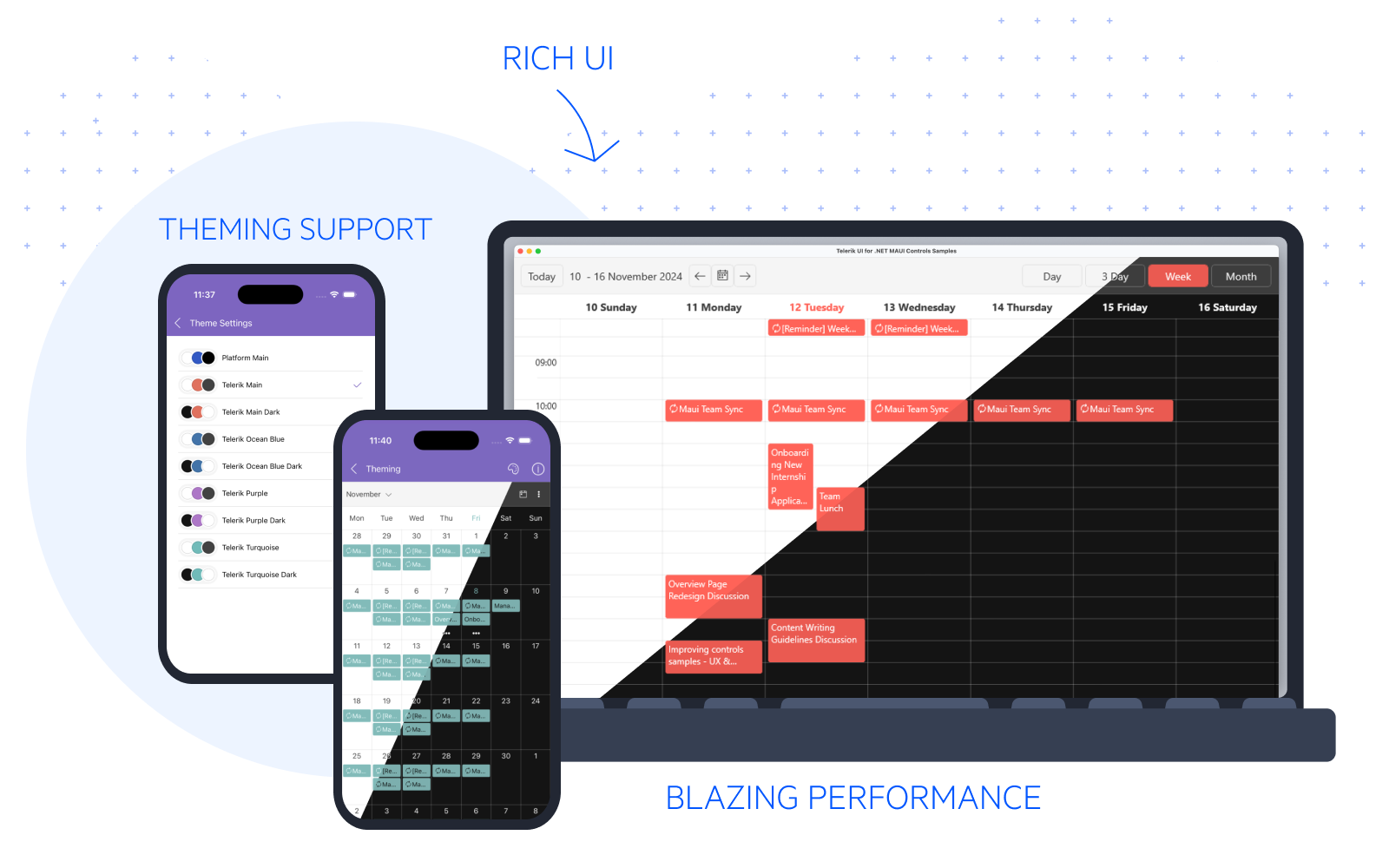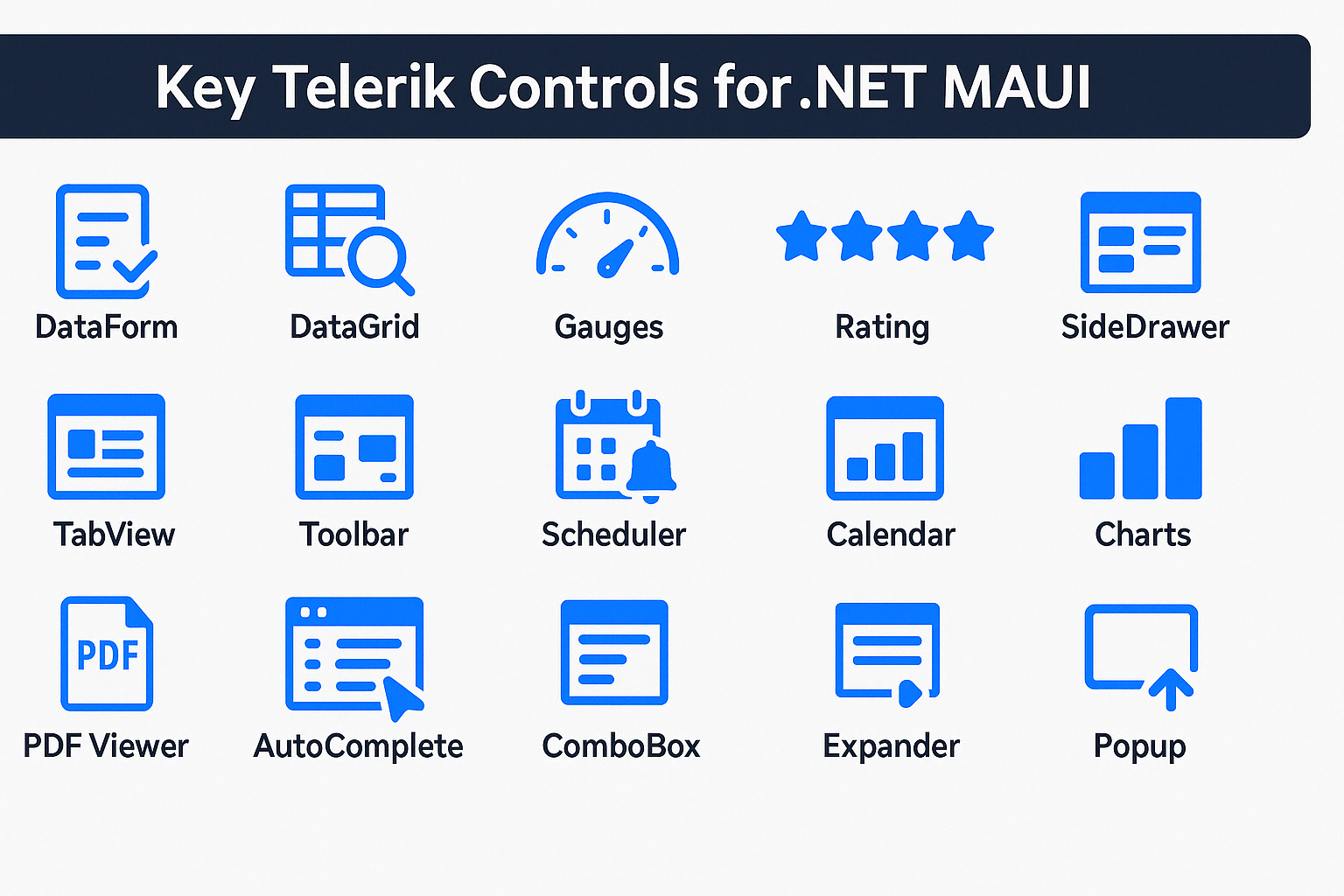How Components Speed Up .NET MAUI App Development

In this article, we are going to analyze how the use of prebuilt components in your .NET MAUI applications can make the difference between a company capable of launching products and updates quickly and one that cannot. Let’s get started!
The Importance of Fast Development and Go-to-Market in the Current Landscape
The world is evolving at a rapid pace today. Proof of this is that in 2023, 5.5 million applications for new business creation were filed in the United States alone, according to a study by Economic Innovation Group. This translates to hundreds of entrepreneurs with similar ideas competing to capture a portion of the market year after year.

Whether you’re an independent entrepreneur or part of a company with a significant number of employees, you must achieve rapid development of digital products, shortening your product’s time-to-market whenever possible to obtain one of the following competitive advantages:
- Be the first to market: If your idea is innovative and unique enough, being the first to market will help you capture customers quickly and gain organic brand presence. Remember, the first strike often hits twice.
- Adaptability to changes: Launching a product to market means being attentive to customer feedback. They are the ones using the product in their daily activities, so you must be capable of improving your applications based on their needs, whether to implement new functionalities you hadn’t considered or to fix potential issues.
- Brand recognition: There’s no better endorsement than being recognized as an innovative company. This can be achieved by introducing new, innovative features before your competition, helping build customer loyalty.
- Avoid being surpassed by the competition: In today’s market, a company that does not evolve its product rapidly is very likely to be overtaken by competitors. Therefore, it is crucial to have strategies and tools that enable quick iterations of your products.
In summary, having the necessary team and tools for rapid development that allows successful launches and updates is one of the key factors that differentiate successful startups from those that fall short.
Common Challenges When Developing .NET MAUI Applications
Businesses and entrepreneurs face a variety of challenges when developing new mobile applications. Some of these challenges include:
- Intense competition: If you have a new idea and search for related apps in an app store, it is likely you will find someone who has already had the same idea. This doesn’t mean you can’t stand out from the rest with a unique value proposition that solves user problems more effectively.
- Limited resources: Startup companies often don’t have surplus funds, meaning they need to maximize every dollar and minute available to launch their mobile applications as soon as possible.
- Difficulty finding technical talent: Creating mobile applications requires hiring specialized talent; however, there is currently a shortage of qualified professionals in the sector. Additionally, such specialists often come with higher associated costs.
- High user expectations: Developing mobile applications is not just about writing code quickly but also creating apps that are functional and visually impressive. Building attractive graphical interfaces from scratch involves a complex process that can delay projects due to its inherent challenges.
- Rapid changes: Companies that don’t iterate quickly on their applications often fall behind their competitors. Having tools and components that support continuous improvement enables businesses to launch new versions of their applications more swiftly.

We can observe that there are common challenges when creating mobile applications. However, many of these challenges can be addressed by using prebuilt controls, as we will see below.
How Ready-to-Use Controls Eliminate the Need to Start from Scratch
.NET MAUI is a technology that currently offers around 40 controls that enable software developers to create cross-platform mobile applications. While these controls are phenomenal for developing standard mobile apps, in reality, there are essential functionalities that go beyond the use of basic controls, as well as the requirement for customizing them.
A practical example is if you wanted to create a fast app with different types of charts. Although you could build these charts from scratch, this would surely take a lot of time in terms of adding functionality, fixing errors, etc. Simply put, why reinvent the wheel when we can focus on business logic instead?
![]()
Ready-to-use controls are designed, implemented and tested by specialists to integrate seamlessly and transparently with mobile applications. Instead of creating, for instance, a DataGrid with sorting, filtering, coloring functionalities—which would surely take a significant development effort—you could use the .NET MAUI DataGrid from Progress Telerik that already has all these features and many more implemented natively.
These prebuilt controls also come with cross-platform support, meaning that the control providers have already done the hard work of implementing and resolving issues on each platform so the controls function correctly. Another important point is that these controls are optimized for high performance, as well as accessibility support, responsiveness and an outstanding appearance.
![]()
Finally, one of the greatest advantages of using prebuilt controls is that you have direct support from the providers, who will offer personalized guidance on using the controls or help resolve issues if any arise.
Impact of Ready Themes, Controls on Development Time
When creating applications, developers need robust controls that can be quickly implemented in just a few lines of code. Prebuilt controls typically offer documentation sites where the features of the controls are explained, as well as instructions on their usage to achieve various objectives, enabling a pleasant development experience.
Furthermore, prebuilt controls help reduce repetitive code in projects, as well as minimize the amount of code developers need to maintain, facilitating the upkeep of solutions in the medium and long term.
Additionally, prebuilt controls often provide a wide range of features that can be activated by modifying a simple property, such as field validation in forms, text box masking and others.
Moreover, the visual appearance of applications is another area that consumes significant resources from development teams. For example, creating different resource dictionaries for dark/light modes or designing visually appealing screens with attractive controls, among others, undoubtedly requires a considerable amount of time.

Fortunately, most control providers offer a series of ready-to-use themes for your projects, requiring only a few lines of configuration. For example, Telerik provides a mechanism that allows you to create themes for your .NET MAUI applications in just minutes.
Key Components That Save Time
When developing applications in .NET MAUI, it is very common to encounter scenarios where the standard .NET MAUI catalog of controls isn’t enough to bring your idea to life. Fortunately, companies like Progress Telerik offer a wide variety of highly functional and customizable controls that will help you create applications quickly, such as:
- DataForm: This control can help you create forms with features such as validation, grouping, customization, etc.
- DataGrid: A control that allows you to display and edit data represented in a tabular format, with options like type-ahead search, column resizing, filtering, grouping, sorting, among many other features.
- Gauges: Controls that enable the display of data in linear or radial gauges, useful for showing value magnitudes within a given range.
- Rating: A control that should always be in your toolbox, allowing users to evaluate something through a rating system.
- SideDrawer: This control allows you to display a side menu, very useful if you don’t want to use the Shell approach in .NET MAUI.
- TabView: Another super helpful control for implementing Tabs in your apps, in case you don’t want to use Shell and need greater control.
- Toolbar: A control that enables the addition of toolbar items, ideal for users to execute quick actions within your app.
- Scheduler: A powerful control that will save you hours of development by providing an interface that simplifies the implementation of various scheduling scenarios.
- Calendar: A highly useful control that allows users to select single dates, multiple dates or date ranges.
- Charts: A set of controls to display different types of graphs based on provided data.
- PDF Viewer: A control that lets you display PDF files within the same application.
- AutoComplete: A text input control that offers term suggestions as the user types.
- ComboBox: A control that allows users to intuitively select an item from a list of elements.
- Expander: A control that saves screen space by enabling content to be expanded and collapsed.
- Popup: A control that lets you display content as popups in the position of your choice.

Of course, there are many other controls I would have liked to include in the list—everything mentioned above reflects personal preferences based on the type of projects I’ve had to develop. Your desired list might include other types of components.
Conclusion
Throughout this article, we’ve explored how prebuilt controls can make the difference between a successful company and one that falls behind, enabling faster launches, more agile application iterations and a range of benefits like premium support, well-structured documentation and properties that add features that could take you months to develop.
If you want to see for yourself what it’s like to develop with prebuilt components, you can try Telerik UI for .NET MAUI free for 30 days.

Héctor Pérez
Héctor Pérez is a Microsoft MVP with more than 10 years of experience in software development. He is an independent consultant, working with business and government clients to achieve their goals. Additionally, he is an author of books and an instructor at El Camino Dev and Devs School.

